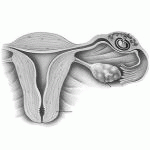Gynaecology
|
23 march 2015 03:31:17 |
| Patterns of social inequalities across pregnancy and birth outcomes: a comparison of individual and neighborhood socioeconomic measures (BMC Pregnancy and Childbirth) |
|
Tweet Background:
This paper identifies patterns of health inequalities (consistency and magnitude) of socioeconomic disparities for multiple maternal and child health (MCH) outcomes that represent different health care needs of mothers and infants.
Methods:
Using cross-sectional national data (unweighted sample = 6,421, weighted =76,508) from the Canadian Maternity Experiences Survey linked with 2006 Canadian census data, we categorized 25 health indicators of mothers of singletons into five groups of MCH outcomes (A. maternal and infant health status indicators; B. prenatal care; C. maternal experience of labor and delivery; D. neonatal medical care; and E. postpartum infant care and maternal perceptions of health care services). We then examined the association of these health indicators with individual socioeconomic position (SEP) (education and income), neighborhood SEP and combined SEP (a four-level measure of low and high individual and neighborhood SEP), and compared the magnitude (odds ratios and 95% confidence intervals) and direction of the associations within and between MCH outcome groups.
Results:
We observed consistent positive gradients of socioeconomic inequalities within most groups and for 23/25 MCH outcomes. However, more significant associations and stronger gradients were observed for the MCH outcomes in the maternal and infant health status group as opposed to other groups. The neonatal medical care outcomes were weakly associated with SEP. The direction of associations was negative between some SEP measures and HIV testing, timing of the first ultrasound, caesarean section, epidural for vaginal births, infant needing non-routine neonatal care after discharge and any breastfeeding at 3 or 6 months.Gradients were steep for individual SEP but moderate for neighborhood SEP. Combined SEP had no consistent gradients but the subcategory of low individual-high neighborhood SEP often showed the poorest health outcomes compared to the categories within this SEP grouping.
Conclusion:
By examining SEP gradients in multiple MCH outcomes categorized into groups of health care needs, we identified large and consistent inequalities both within and between these groups. Our results suggest differences in pathways and mechanisms contributing to SEP inequalities across groups of MCH outcomes that can be examined in future research and inform prioritization of policies for reducing these inequalities. |
| 137 viewsCategory: Gynaecology |
 Maternal lifestyle characteristics during pregnancy, and the risk of obesity in the offspring: a study of 5,125 children (BMC Pregnancy and Childbirth) Maternal lifestyle characteristics during pregnancy, and the risk of obesity in the offspring: a study of 5,125 children (BMC Pregnancy and Childbirth)Mouse models of mastitis – how physiological are they? (International Breastfeeding Journal) 
|
| blog comments powered by Disqus |
MyJournals.org
The latest issues of all your favorite science journals on one page
The latest issues of all your favorite science journals on one page



